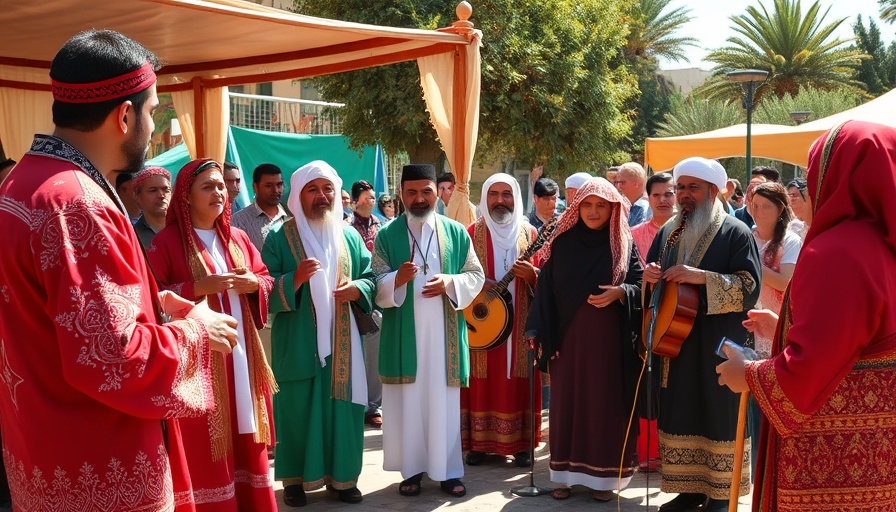
Unveiling Ahleil: The Heartbeat of Algerian Heritage
In the remote southern landscapes of Algeria, the vibrant cultural heritage of the Ahlil Guarara, a unique form of singing, echoes through the sands of time. This enchanting art form, rooted deeply in the Berber traditions of the region, boasts a rich history dating back to before the advent of Islam. Known for its intricate melodies and spiritual depth, Ahleil emerged from the Tamimoun area, evolving from its ancient name, "Aznoun." Some scholars theorize that the term "Ahleil" translates to “people of the night,” reflecting the nocturnal performances that characterize this genre, while others connect it to celestial themes linked to the moon.
More Than Just Music: The Performative Tradition
Ahleil is not merely a genre of music; it is a communal experience. Both men and women participate, performing in groups of seven, taking their positions to chant in rhythm with claps that accompany their movements. This stunning display often unfolds during significant religious occasions and festive gatherings, enriching the cultural tapestry of Algerian society. Notably, there are two forms of this tradition: Taqrabet, a seated performance with instrumental accompaniment, and the meticulously choreographed Ahleil, marked by the standing performances that employ traditional instruments such as the flute and drum.
Bridging Cultures: Comparative Insights
The beauty of Ahleil extends beyond Algeria's borders, bearing resemblance to other musical traditions found in the Arabian Peninsula. Renowned poet Muhammad Aziz Al-Arfaj draws parallels between Ahleil and the airy chants of Najd, suggesting that cultural expressions of joy and storytelling unite communities across distinct geographic locales. Such connections highlight the universal language of music—enabling diverse cultures to resonate with one another through shared rhythms and themes, especially in their poetic narratives.
UNESCO Recognition: A Global Symbol of Heritage
In an exciting milestone, Ahleil was designated as a UNESCO Intangible Cultural Heritage, marking its importance not only to Algeria but to global cultural diversity. This classification serves as a beacon for remembrance and appreciation of traditions that echo the lives and loves of the Sahrawi people, showcasing their unique storytelling through song. The lyrical themes addressed in Ahleil, exploring love, valor, and spirituality, highlight why maintaining and celebrating such traditions is essential in a rapidly changing world.
As you immerse yourself in the melodies of Ahleil, consider how this form of artistic expression connects you not just to Algeria’s history but to a greater world narrative, where culture transcends barriers and fosters a profound sense of belonging.
 Add Row
Add Row  Add
Add 




Write A Comment